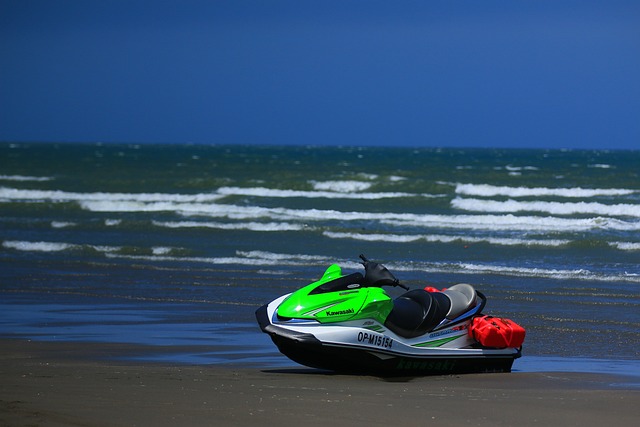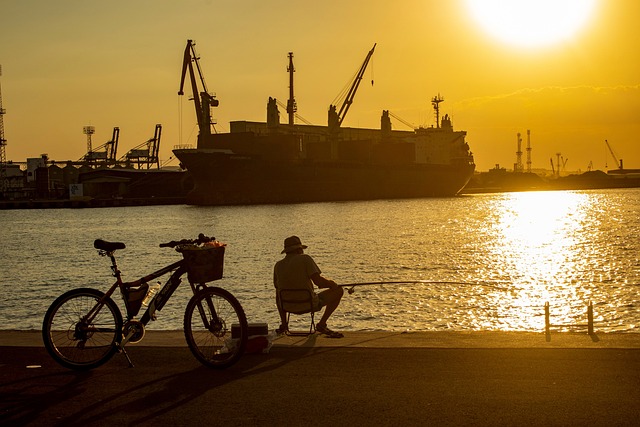Choosing the right boat battery for your sailboat is a critical decision that affects both the reliability of your electrical system and the overall safety of your voyage. Consider your specific power demands by cataloging all onboard electronic devices and their average amp-hour consumption to determine the necessary battery capacity. Assess whether lead-acid, AGM, or lithium-ion batteries best fit your needs based on factors like lifecycle, weight, maintenance requirements, and budget. Ensure the selected battery fits within your sailboat's storage space and offers enough reserve capacity for your planned trips, taking into account ambient temperature variations that can impact performance. Regular maintenance is key to extending the service life of your chosen battery type, with lithium-ion batteries offering a longer lifespan and higher energy density at a premium. Ultimately, the ideal boat battery is one that matches your sailing habits and provides consistent power for all your maritime adventures.
When embarking on a sailboat journey, selecting the right boat battery is pivotal for ensuring reliable power amidst the marine elements. This article demystifies the process of choosing an optimal battery size tailored to your sailboat’s needs. We’ll explore the specific demands of sailboat electrical systems, the array of available boat batteries, and how to accurately assess your power requirements. Key factors influencing battery performance, such as ampere-hours and lifecycle expectations, will be examined to help you make an informed decision. Dive into the essentials of optimizing your sailboat’s battery selection for uninterrupted adventures on the water.
- Understanding the Demands of Sailboat Electrical Systems on Boat Batteries
- Types of Boat Batteries and Their Suitability for Sailboats
- Assessing Your Sailboat's Power Needs: A Step-by-Step Guide
- Key Factors to Consider When Selecting the Right Battery Size
- Navigating Ampere-Hours (Ah): What They Mean for Your Sailboat's Journey
- Maintenance and Lifecycle Expectations for Sailboat Batteries: Making an Informed Choice
Understanding the Demands of Sailboat Electrical Systems on Boat Batteries

When it comes to powering the electrical systems on a sailboat, selecting the right boat battery is pivotal for optimal performance and reliability. Unlike land-based vehicles, sailboats often operate in remote locations where recharging opportunities may be limited or sporadic. This necessitates the use of deep-cycle batteries that are designed to withstand frequent discharge and recharge cycles without compromising longevity. The demands on a sailboat’s electrical system can vary greatly depending on the size of the vessel, the number of electronic devices aboard, and the length of the voyage. Essential systems such as navigation lights, depth finders, GPS units, and VHF radios require consistent power to ensure safety and operational readiness at all times. Additionally, on longer passages, considerations for appliances like refrigeration, watermakers, and autopilots further increase the electrical load.
To address these needs, it’s crucial to assess the total power consumption of all devices and systems that will be in use during your sailing expeditions. This assessment will help determine the size and type of battery or batteries best suited for your specific setup. For instance, lead-acid batteries have been a traditional choice, but modern alternatives like AGM (Absorbent Glass Mat) or lithium-ion batteries offer greater efficiency, longer lifespans, and higher power output, which can be particularly advantageous on larger sailboats with more significant energy demands. It’s also essential to consider the boat’s electrical architecture, including the battery bank configuration, charging systems, and power management strategies. Properly selecting and sizing your batteries will not only enhance your sailing experience but also contribute to the overall safety and reliability of your voyages.
Types of Boat Batteries and Their Suitability for Sailboats

When selecting a boat battery for your sailboat, it’s crucial to understand the different types available and their respective suitabilities. Sailboats require batteries that are robust enough to handle the unique demands of marine use, which include starting engines and powering onboard systems and electronics. The primary types of boat batteries include starter (cranking), deep-cycle, and dual-purpose batteries. Starter batteries are designed for short, high-current bursts to crank the engine. They typically have a higher ampere hour (Ah) rating at 10 hours compared to deep-cycle batteries due to their thicker plates that resist corrosion from the salty marine environment.
Deep-cycle batteries, on the other hand, are built for sustained discharge and are ideal for trolling motors, electronic devices, and other onboard applications where power is drawn over longer periods. They have a lower cold cranking amps (CCA) rating but offer a higher Ah rating at 20 hours. Dual-purpose batteries, as the name suggests, offer a balance between starter and deep-cycle capabilities, making them versatile for various onboard needs. When choosing the right battery size for your sailboat, consider factors such as the boat’s electrical load, the size of the engine, and the frequency of use. Also, think about the duration of your voyages and whether you’ll need additional batteries to ensure redundancy and reliability during long passages. Boat batteries come in various sizes, from small 12-volt models to larger units that can be configured in series or parallel to achieve the desired voltage and capacity. The choice should align with the boat’s power requirements and space availability, ensuring that you have a reliable power source when you need it most at sea.
Assessing Your Sailboat's Power Needs: A Step-by-Step Guide

When outfitting your sailboat with the appropriate boat battery, it’s crucial to meticulously assess your vessel’s power requirements to ensure uninterrupted performance at sea. The first step in this process is to inventory all electrical components on board, considering everything from navigation lights and GPS systems to refrigeration units and autopilot mechanisms. Each of these devices draws power differently, with some being intermittent users of electricity while others may run continuously. It’s essential to estimate the average amp-hour consumption for each device and calculate their total energy usage over a typical sailing day or passage.
Once you have a clear picture of your boat’s power needs, you can select a battery with enough capacity to handle your equipment. Boat batteries come in various sizes and chemistries, including lead-acid, AGM (Absorbent Glass Mat), and lithium-ion. The choice between these types will depend on factors like lifecycle expectations, maintenance requirements, and the cost of ownership. For instance, lithium-ion boat batteries are lighter and offer more cycles than traditional lead-acid options but may carry a higher initial cost. After determining the right type of battery for your sailboat, consider the physical space available for the installation, ensuring that the chosen battery fits comfortably within the allocated compartment while providing sufficient reserve capacity to handle unexpected power demands or extended periods without solar charging. Properly sizing your boat battery according to these guidelines will contribute significantly to the reliability and safety of your voyages, allowing you to navigate with confidence and peace of mind.
Key Factors to Consider When Selecting the Right Battery Size

When selecting the right boat battery for your sailboat, several key factors must be carefully considered to ensure optimal performance and reliability on the water. Firstly, assess the power requirements of your sailboat’s electrical systems, including navigation equipment, communication devices, lighting, and any other onboard appliances. This will provide a clear picture of the total battery capacity needed to support these systems during extended voyages or when the boat is at anchor without the benefit of solar panels or shore power.
Secondly, consider the types of boat batteries available and their suitability for your sailboat’s specific needs. Deep-cycle lead-acid batteries have been a traditional choice due to their reliability and cost-effectiveness, but modern alternatives like lithium-ion and AGM (Absorbent Glass Mat) batteries offer lighter weights, longer lifespans, and greater power output. Factors such as the boat’s battery compartment size, the frequency of your sailing trips, and the duration of each trip are crucial in determining the physical size and type of battery that will fit and function best within your vessel. Additionally, the ambient operating temperatures on your sailboat should be taken into account, as extreme temperatures can affect battery performance and lifespan. By carefully evaluating these aspects, you can make an informed decision on the right boat battery to ensure uninterrupted power for all your sailing adventures.
Navigating Ampere-Hours (Ah): What They Mean for Your Sailboat's Journey

When embarking on long voyages or extended stays at sea, selecting the appropriate boat battery with the right Ampere-Hours (Ah) rating is crucial for ensuring your sailboat’s power needs are met. Ampere-Hours indicate the total electrical charge that a battery can provide over a period of one hour. For sailors, understanding Ah is essential as it directly affects how long your electronic devices, navigation systems, and other onboard equipment will operate without depleting your batteries. Typically, a boat battery’s Ah rating should align with your vessel’s power consumption patterns. For instance, if you frequently use electrical appliances or electronics for extended periods, opting for a higher Ah rating is advisable to avoid being stranded without power. It’s not just about the capacity; the type of battery technology, such as lead-acid, AGM, or lithium, also plays a significant role in performance and longevity. Each technology offers different benefits, including weight savings and increased lifespan, which can be pivotal during those long sailing journeys. To ensure your boat batteries are up to the task, assess your power usage honestly, consider the battery’s depth of discharge, and choose a battery with an Ah rating that not only supports your current needs but also accommodates future upgrades or longer voyages. This proactive approach will safeguard your journey and enhance your experience on the high seas.
Maintenance and Lifecycle Expectations for Sailboat Batteries: Making an Informed Choice

When selecting the appropriate battery size for your sailboat, it’s crucial to consider the maintenance and lifecycle expectations associated with each option. Boat batteries come in various types, including lead-acid, AGM (Absorbent Glass Mat), gel, and lithium-ion, each with distinct characteristics that influence their maintenance requirements and service life. Lead-acid batteries, for instance, have traditionally been used but may require more frequent maintenance due to their tendency to shed active material, leading to a shorter lifecycle compared to modern options.
AGM and gel batteries offer spill-proof construction and longer lifespans, making them a preferred choice for many sailors. These batteries are sealed and maintain their charge better over long periods of disuse, which is common in sailing conditions. They also have a higher number of charge/discharge cycles before they need replacement. Lithium-ion boat batteries are the most advanced and can provide significant advantages, such as lightweight design, higher energy density, and a longer service life, often exceeding 10 years with proper care. However, their cost is typically higher than other types. Proper maintenance for any battery type includes regular charging, topping off fluid levels if necessary, ensuring the battery is securely mounted to prevent movement that could damage the cells, and keeping the terminals clean and corrosion-free. Understanding the lifecycle expectations of your chosen battery type will help you make an informed choice and ensure your sailboat’s power needs are reliably met for years to come. Regular monitoring of battery health through voltage checks and amp-hour testing can assist in extending its life and ensuring it performs optimally during your voyages.
When selecting the ideal battery size for your sailboat, it’s crucial to consider the unique demands of your vessel’s electrical system and the specific power needs you’ll encounter on your voyages. This article has navigated through the key factors and types of boat batteries, ensuring you have a comprehensive understanding to make an informed decision. By assessing your sailboat’s energy consumption and understanding ampere-hours, you can effectively select a battery that matches your power requirements. Additionally, keeping in mind the maintenance and lifecycle expectations for sailboat batteries is essential for long-term reliability on the water. With the knowledge provided here, you are now well-equipped to choose the right boat battery to enhance your sailing experience.
